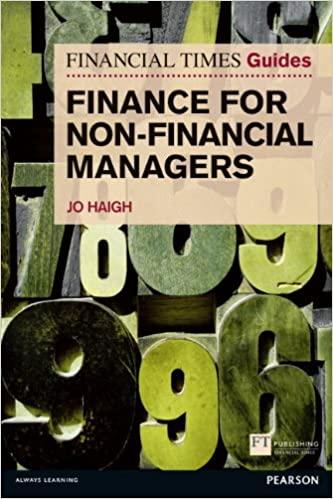Chapter 9 In class activity niin is interested in measuring its overall cost of capital. Current investigation has gathered the following data: The firm is in the 35% tax bracket. 1) Debt: The firm can raise debt by selling $1 comma 000-par-value, 9% coupon interest rate 15-year bonds on which annual interest payments will be made. To sell the issue an average discount of $50 per bond would have to be given. The firm also must pay flotation costs of $20 per bond 2) Preferred stock: The firm can sell 6.5% preferred stock at its $90-per-share par value. The cost of issuing and selling the preferred stock is expected to be $6 per share. Preferred stock can be sold under these terms 3) Common stock: The firm's common stock is currently selling for $55 per share. The firm expects to pay cash dividends of $4.5 per share next year. The firm's dividends have been growing at an annual rate of 7%, and this growth is expected to continue into the future. To sell new shares of common stock, the firm must underprice the stock by $8 per share, and flotation costs are expected to amount to $ 3 per share. The firm can sell new common stock under these terms: Retained earnings: When measuring this cost, the firm does not concern itself with the tax bracket or brokerage fees of owners. It expects to have available $140 comma 000 of retained earnings in the coming year, once these retained earnings are exhausted, the firm will use new common stock as the form of common stock equity financing a) Calculate the after-tax cost of debt. b) Calculate the cost of preferred stock. c) Calculate the cost of common stock. d) Calculate the firm's weighted average cost of capital using the capital structure weights shown in the following table Weight Source of capital Long-term debt Preferred stock Common stock equity 40% 15 45 Total 100% Chapter 9 In class activity niin is interested in measuring its overall cost of capital. Current investigation has gathered the following data: The firm is in the 35% tax bracket. 1) Debt: The firm can raise debt by selling $1 comma 000-par-value, 9% coupon interest rate 15-year bonds on which annual interest payments will be made. To sell the issue an average discount of $50 per bond would have to be given. The firm also must pay flotation costs of $20 per bond 2) Preferred stock: The firm can sell 6.5% preferred stock at its $90-per-share par value. The cost of issuing and selling the preferred stock is expected to be $6 per share. Preferred stock can be sold under these terms 3) Common stock: The firm's common stock is currently selling for $55 per share. The firm expects to pay cash dividends of $4.5 per share next year. The firm's dividends have been growing at an annual rate of 7%, and this growth is expected to continue into the future. To sell new shares of common stock, the firm must underprice the stock by $8 per share, and flotation costs are expected to amount to $ 3 per share. The firm can sell new common stock under these terms: Retained earnings: When measuring this cost, the firm does not concern itself with the tax bracket or brokerage fees of owners. It expects to have available $140 comma 000 of retained earnings in the coming year, once these retained earnings are exhausted, the firm will use new common stock as the form of common stock equity financing a) Calculate the after-tax cost of debt. b) Calculate the cost of preferred stock. c) Calculate the cost of common stock. d) Calculate the firm's weighted average cost of capital using the capital structure weights shown in the following table Weight Source of capital Long-term debt Preferred stock Common stock equity 40% 15 45 Total 100%







